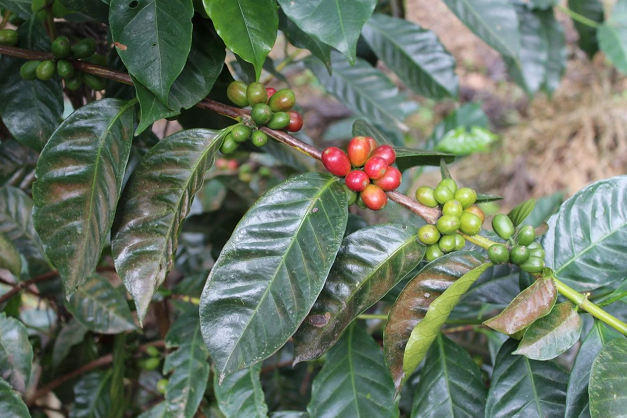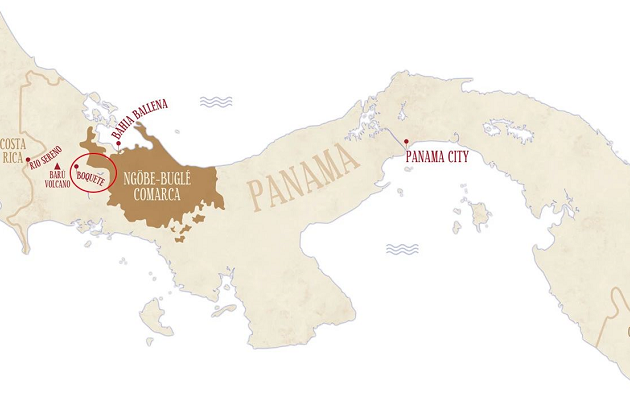What is the origin of the world's top coffee? evaluation of the flavor of Panamanian coffee producing areas and introduction of the top producing areas of boutique coffee beans.
Today, let's introduce the world's top coffee producer Panama, why it is said to be the world's top producer? One of the most popular coffee in recent years definitely has a place for Rose Summer Coffee, and Rose Summer Coffee is most famous for its Jade Manor, which carries forward Rose Summer Coffee. At first, the Jade Manor found that Rose Summer felt that its flavor was different from that of Panamanian coffee. Rose Summer preferred more oranges and flowers, so it began to study it and take it to the competition. And Rose Xia also lived up to people's expectations and won the champion of the coffee competition, so it became famous. As a result, the jadeite specialty also classified the Rose Summer Coffee trees produced according to the microclimate of different plots, that is, the red label Rose Summer, the Green Standard Rose Summer and the Blue Standard Rose Summer that can be seen in the shop in front street.

History of Coffee cultivation in Panama
The history of Panamanian coffee began in 1780 when Europeans first brought the first varieties of Typica to Panama. The construction of the Panama Canal 100 years ago attracted a large number of senior European intellectuals. After the completion of the construction of the canal, a large number of senior engineers stayed because they were infatuated with the excellent climate of western Panama. The purchase of a manor in Pocket opened a precedent for the cultivation of boutique coffee in Panama. For Panamanians at that time, such drinks were both novel and mysterious, which not only quickly conquered people's sense of taste, but also led to the widespread planting of coffee trees by local people.
But the early Panamanian coffee was not famous and produced little. Today, Panama is famous for its rosy summer, and there is a saying that "if you don't know roses and summer beans all your life, it's no use claiming to be a glutton." this situation is more likely to come from 2004. The variety Geisha was discovered in the forests of Ethiopia in 1931. Rosa was then sent to the Coffee Institute in Kenya, introduced to Uganda and Tanzania in 1936, Costa Rica in 1953 and Panama in 1970. At first, little attention was paid to Rosa because the yield was low and local farmers ignored it until Panama Geisha Hacienda La Esmeralda separated it from other varieties in 2003 and became the champion of the BOP competition in 2004. The rose summer variety officially entered everyone's line of sight.

The geographical location of Panama
Panama is bordered by the Caribbean Sea to the east, the Pacific Ocean to the west, Costa Rica to the north and Colombia to the south-it is an important isthmus connecting North and South America.

Pokuit producing area
Boquet
The coffee growing area of Pokuit is between 1400 and 1900 meters above sea level, a town in Chiriqui province, located near the border between Panama and Costa Rica, close to the famous Baru volcano, scenic, rich soil, climate and soil are very suitable for producing quality coffee. There are also many excellent estates in the Pokuit area, except the Emerald Manor, Alida Manor, Catova Duncan Manor and so on all produce high-quality boutique coffee.
This is not only due to the mild climatic conditions in the Poquet region of Panama and the fertile volcanic ash soil of the Baru volcanic land. In addition, another important factor is the changeable microclimate in the Poquet Heights of Panama.
Panama's east-west environment allows cold air to converge through the Central Mountains between 1200 meters and 2000 meters above sea level. Fog, rain and changeable winds in the mountains have created a variety of microclimates in the Pokuit region, making it temperature. rainfall is very suitable for plant growth, so the coffee trees planted here are growing very well.
Important Notice :
前街咖啡 FrontStreet Coffee has moved to new addredd:
FrontStreet Coffee Address: 315,Donghua East Road,GuangZhou
Tel:020 38364473
- Prev

What kind of coffee should I drink for the first time? What's the difference between latte and American style? What kind of coffee beans taste good?
There are a wide variety of coffee, and there are all kinds of strange ways to make coffee. Friends who come into contact with coffee for the first time should be confused, so how to choose a suitable cup of coffee? Personally, I suggest that you can try a latte for the first time. Why a latte? Because the latte is a cup of milk coffee, and milk
- Next

Introduction to the flavor description characteristics of Huakui coffee beans in Gujimbela, Ethiopia
In the past, the top three coffee varieties in the World Coffee Brewing Competition in China were almost all Rosa varieties, but in 2017, this phenomenon was broken. A native species of Huakui coffee beans from Ethiopia beat many rose summers of that year and won the second place of the year. Before that, it had already
Related
- Beginners will see the "Coffee pull flower" guide!
- What is the difference between ice blog purified milk and ordinary milk coffee?
- Why is the Philippines the largest producer of crops in Liberia?
- For coffee extraction, should the fine powder be retained?
- How does extracted espresso fill pressed powder? How much strength does it take to press the powder?
- How to make jasmine cold extract coffee? Is the jasmine + latte good?
- Will this little toy really make the coffee taste better? How does Lily Drip affect coffee extraction?
- Will the action of slapping the filter cup also affect coffee extraction?
- What's the difference between powder-to-water ratio and powder-to-liquid ratio?
- What is the Ethiopian local species? What does it have to do with Heirloom native species?

